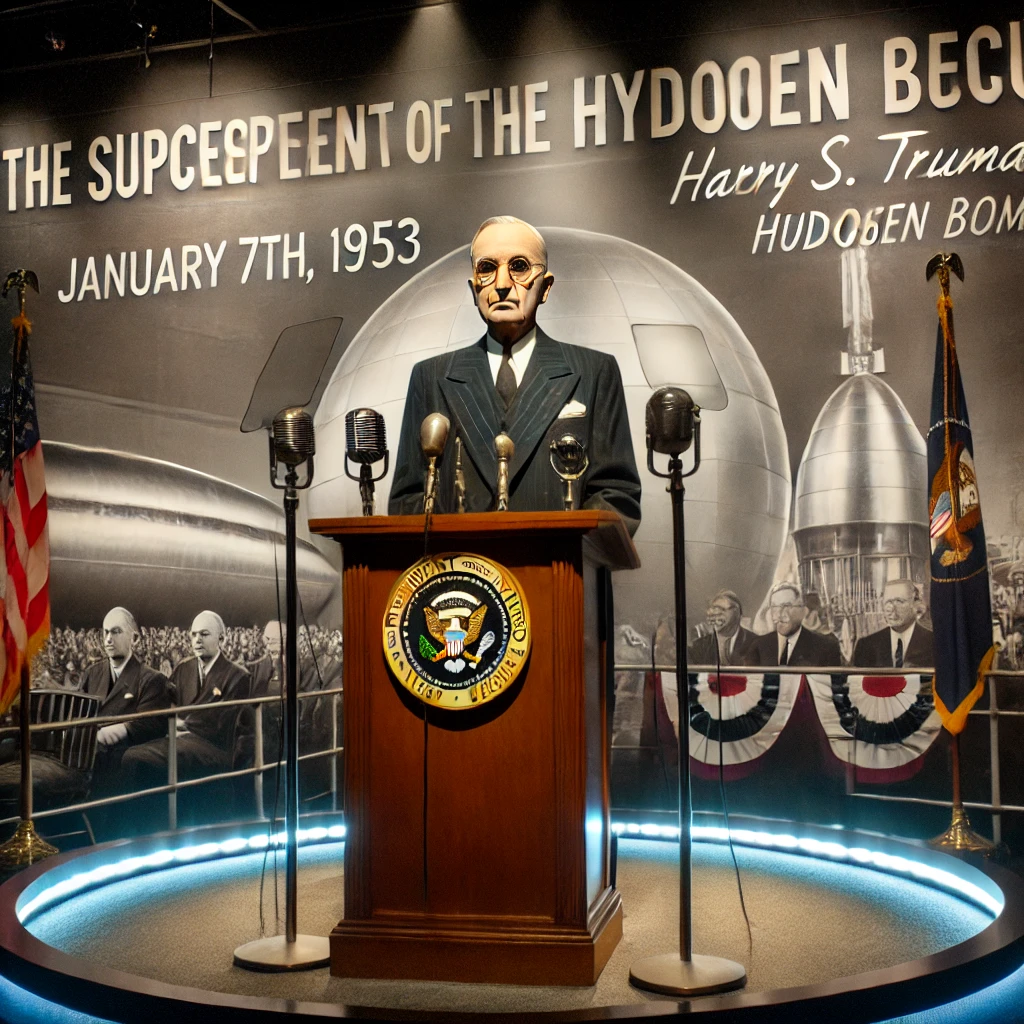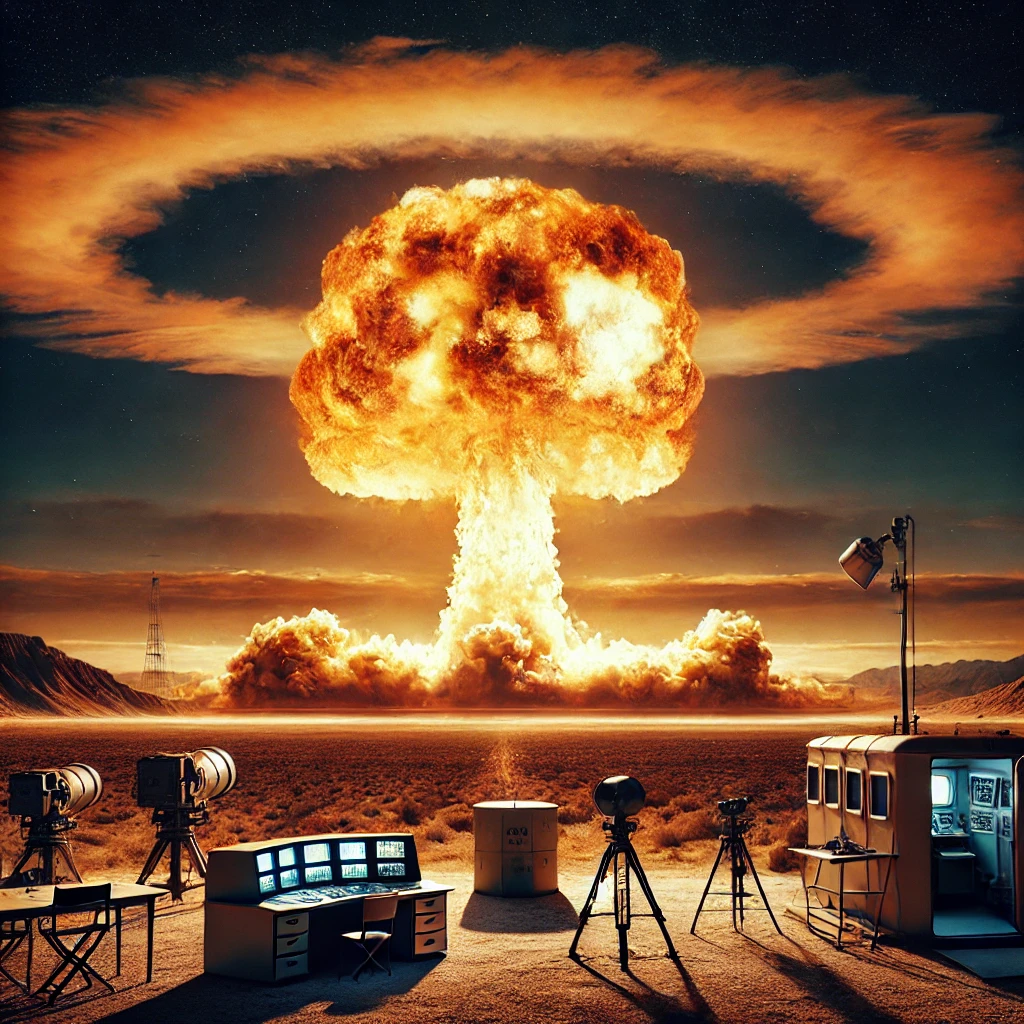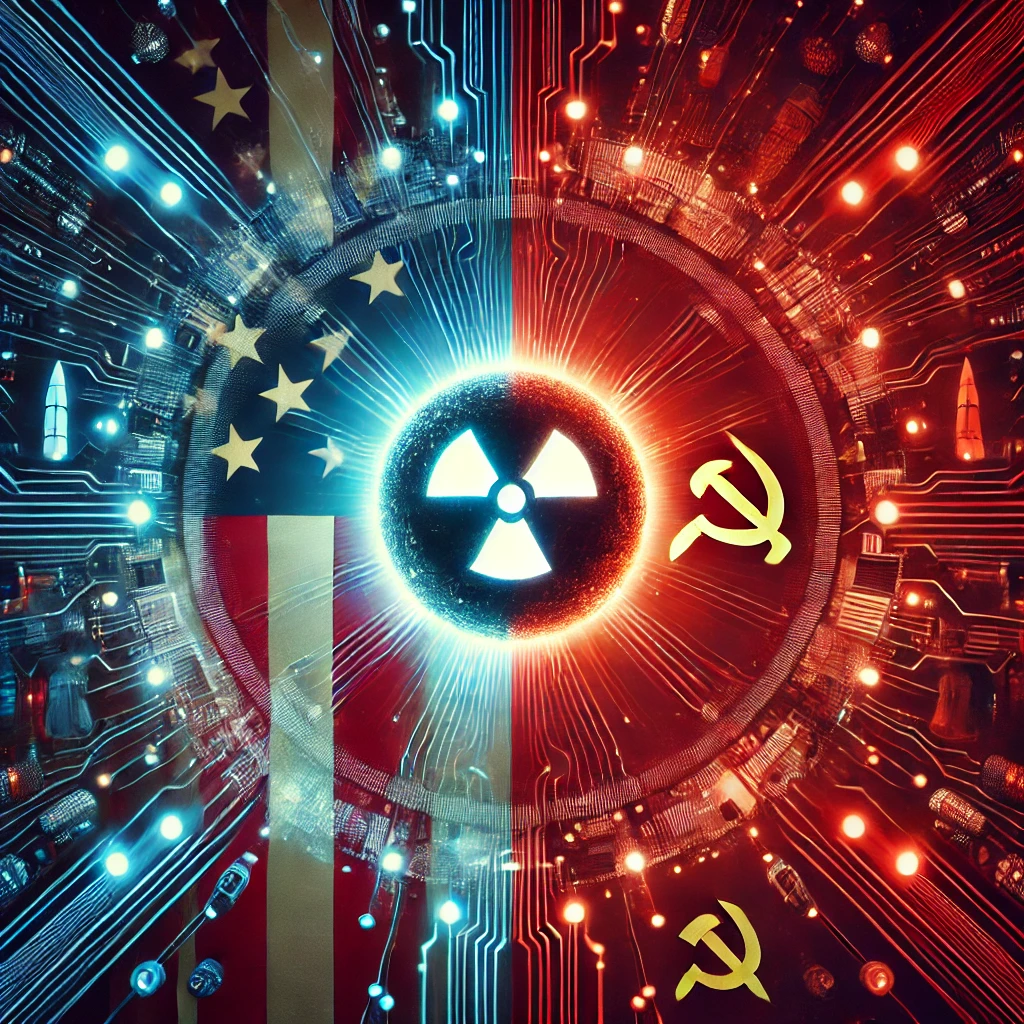On January 7th, 1953, President Harry S. Truman announced that the United States had successfully developed the hydrogen bomb, a nuclear weapon far more powerful than the atomic bomb that had been dropped on Japan just eight years earlier. This announcement marked a significant moment in the Cold War, signaling the U.S. had entered a new phase of nuclear arms development. The hydrogen bomb, also known as the thermonuclear bomb, would dramatically alter the balance of power between the superpowers and escalate the global arms race.

The Development of the Hydrogen Bomb
The development of the hydrogen bomb was a closely guarded secret, with the U.S. government and military working on it through the Manhattan Project’s successor programs. While the atomic bomb worked by splitting the nucleus of an atom in a process called fission, the hydrogen bomb used fusion—the process of combining two atomic nuclei to form a heavier nucleus, releasing significantly more energy. Scientists working on the bomb, such as J. Robert Oppenheimer and Edward Teller, faced a number of scientific challenges in harnessing the power of fusion, but by the early 1950s, they had managed to achieve success.
Truman’s announcement came after extensive experimentation, including the first successful test of a hydrogen bomb in November 1952 at Enewetak Atoll in the Pacific Ocean. The test, code-named “Ivy Mike,” proved that fusion could indeed be achieved in a man-made device, and the bomb’s explosive power was staggering—thousands of times more powerful than the atomic bombs dropped on Hiroshima and Nagasaki.

Escalating the Arms Race
The hydrogen bomb’s development fundamentally changed the dynamics of the Cold War. The Soviet Union, which had successfully detonated its own atomic bomb in 1949, now found itself in a race with the U.S. to develop even more powerful nuclear weapons. In response to Truman’s announcement, the Soviet Union accelerated its own hydrogen bomb program, leading to an arms race that would dominate global politics for decades.
The hydrogen bomb also introduced the concept of mutually assured destruction (MAD), where both superpowers possessed enough nuclear weapons to annihilate each other in the event of a conflict. This doctrine of deterrence helped to prevent direct military confrontations between the U.S. and the Soviet Union but also increased the fear of nuclear war during the Cold War era. The arms race pushed both nations to develop increasingly sophisticated nuclear weapons, while the threat of total destruction hung over international relations.

The Long-Term Impact on Global Security
The development of the hydrogen bomb and the resulting nuclear arms race had a lasting impact on global security and diplomacy. In the decades following Truman’s announcement, the world witnessed the proliferation of nuclear weapons, as both superpowers and their allies sought to secure their national security by acquiring more powerful arsenals. The spread of nuclear technology raised concerns about the possibility of smaller nations or rogue states obtaining these weapons, which could destabilize global peace.
Efforts to curb the spread of nuclear weapons led to the establishment of several international treaties, including the Nuclear Non-Proliferation Treaty (NPT) in 1968, which aimed to prevent the further spread of nuclear weapons and encourage disarmament. Although nuclear weapons have not been used in combat since World War II, the threat of their use continues to shape international politics today. The legacy of the hydrogen bomb remains a powerful reminder of the destructive potential of nuclear technology and the importance of diplomatic efforts to prevent nuclear conflict.
President Truman’s announcement on January 7th, 1953, that the U.S. had developed the hydrogen bomb marked a pivotal moment in the history of nuclear warfare. The weapon’s immense power escalated the Cold War arms race and introduced a new era of military and political dynamics. The long-term impact of the hydrogen bomb’s development continues to shape global security, with nuclear weapons remaining a central issue in international relations and peacekeeping efforts. The specter of nuclear war looms large, but the lessons learned from the development of the hydrogen bomb have also driven efforts toward arms control and non-proliferation in an effort to prevent the catastrophic consequences of nuclear conflict.
